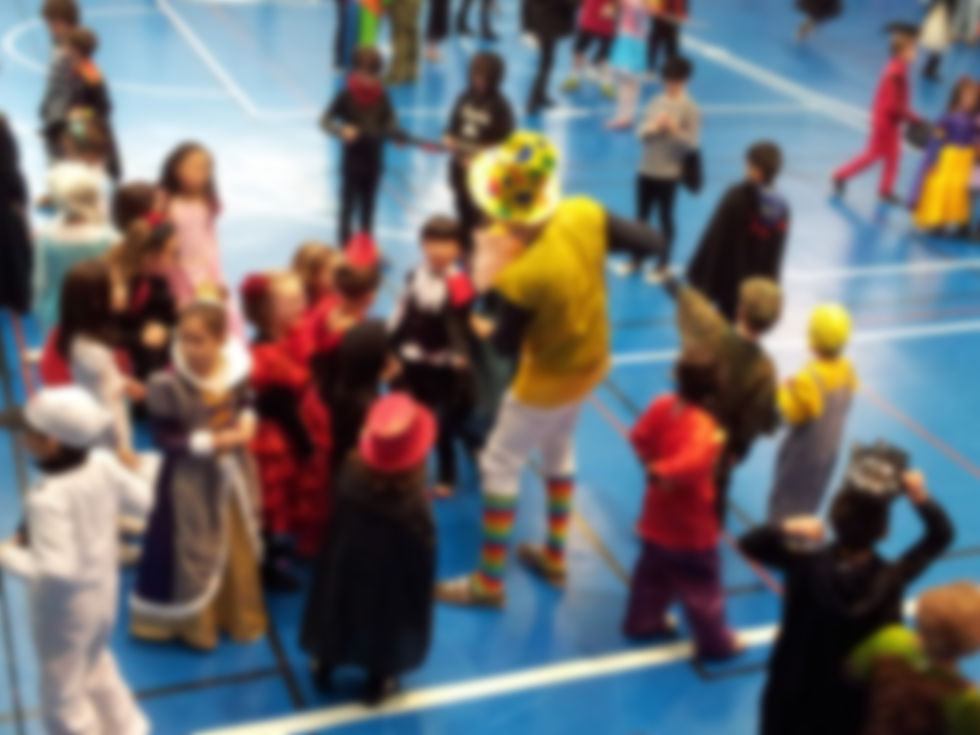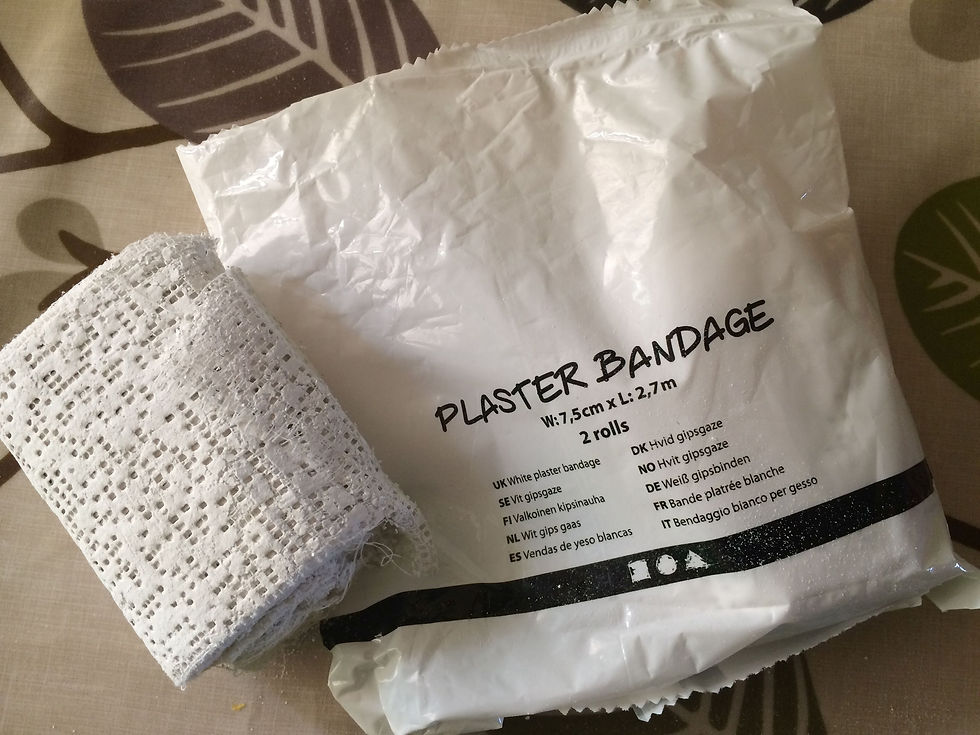Carnival / Activities for kids
- Susan Páez

- Feb 13, 2019
- 5 min read
Updated: Mar 1, 2022
Hi! Welcome to my blog! I'm going to be talking about the Carnival in Spain and also about some activities you can do to celebrate the Carnival, even if you aren't in Spain. You can ask your parents or your teachers to join in and help you.
Carnival in Schools

This year (2022) the Carnival starts on Thursday the 24th of February and ends on Tuesday the 1st of March (which is Pancake Tuesday here in the UK).
Do you know the days of the week in Spanish? Well here you have most of them. Do you know which one is missing?*
Jueves Lardero (Fat Thursday)
Viernes de Carnaval (Carnival Friday)
Sábado de Carnaval (Carnival Saturday)
Domingo de Carnaval (Carnival Sunday)
Lunes de Carnaval (Carnival Monday)
Martes de Carnaval: Entierro de la Sardina
(Pancake Tuesday: Burial of the Sardine)
*Yes, it's miércoles (Wednesday). Ash Wednesday follows Fat Tuesday and it is the first day of Lent. In Spanish it's called "Miércoles de Ceniza". Don't worry if you didn't know, as now you do!

I was wondering if Spanish children had to go to school during these days or if they had holidays. So I went to investigate...Well, what I found out was that it depends on where they live. Spain is divided into different regions which have different school holidays. So it's a matter of luck whether you get more or less days off!
For example if you live in Madrid you will have Friday and Monday off. If you live in "Castilla La Mancha" and in "Castilla y León" you will have Monday and Tuesday off. If you live in "Andalucía" you will have Thursday and Friday off. But if you live in "Galicia" you will have Monday, Tuesday and Wednesday off, and in some schools the whole week!!!! It is all very complicated, as some of these holidays aren't related to the Carnival, even if they fall on the Carnival dates.

During the Carnival, on the days there is school, some schools will celebrate by having their own parade or fancy dress parties. So the whole school will dress up and party to their favourite music! Other schools don't celebrate it at all! So it's pot luck!
At my nephews' school they include an educational topic. One year the theme was the history of the human race. The children from reception dressed up as little cave men. My nephews' class dressed up as vikings and there were also people from the rock and roll era. The parents provide the costumes, those devoted hard-working parents!
Parades
Children can also take part in the local parade, dress up with their friends and family.
Even if you are not part of the parade you can still dress up, interact with other people from the parade and have your picture taken. Remember to ask your parents beforehand, though!
Masks / Máscaras
Well, if you like crafts what better activity than to make some masks. You can use all sorts of different materials and you can have a look in your craft cupboard and see what you can find. Here are a few suggestions:
Paper or card: This is a simple and easy option. You just need card or paper, paints and elastic. Choose what you would like to make. It could be anything you like, animals, super heroes, objects, insects, funny faces...I chose a deer and copied it from a book. Deer is called "ciervo" in Spanish. You could try and find out what the name of what you have chosen is in Spanish. You can use Google translate online.

Felt: You can use this material in a similar way by drawing on it and you can add some 3D effects with the felting wool.

Plaster bandages: I love making masks out of this. They are bandages that you use for making casts. After going all around town I found these in The Range, you might also get them in a good craft shop or in the first aid section of a big store.
First of all you need to make sure the hair of the person you will be making the mask from is tied back. Apply lots of Vaseline to their face, specially their eyebrows as they might become attached to the plaster and the person will end up with no eyebrows!!! For further safety put toilet paper on top of the Vaseline. After that, cut the bandages, shape them and apply them carefully to the face avoiding the hair line. Remember to leave gaps for the eyes, nostrils and mouth. Wet the bandages with warm water to blend them all together and shape the mask. Take the mask off the face and leave it to dry. After that you can decorate it as you please. You can add more plaster to create different features, such as a longer bigger nose, high cheekbones, etc... Here is a video tutorial I have found to give you some visual aid.
I have found a Spanish web with very beautiful and unusual ideas for making DIY masks, just follow the link
Reading / Lectura
If you are learning Spanish and you like to read you might like a series of books called "Teo" written by Violeta Denou. The books have really nice illustrations, the text on each page is short and not too complicated. Each book will tell a story about different traditions and activities in Teo's life. I used to read them to my children when they were little and they loved them.
There is one called "Teo se disfraza" (Teo dresses up) and it's about the Carnival. Here are some photos of the book. In them you can see Teo shopping for material to make his costume. He is choosing different coloured cards and you can also see the party after the parade with the band playing and everyone dancing.
We were very lucky and inherited these books from my niece and nephew. I have had a look online and you can find them on Amazon UK
Your own Carnival / Tu propio Carnaval

Why not take the opportunity to organise a Carnival either at your school or with your friends at home. All you need to do is ask everyone to dress up and organise some music to dance to. It's a good idea to ask everyone which their favourite song is and add it to your music list. That way you know that at least they will enjoy that song and might want to dance to it.
You could serve pancakes and blend English and Spanish traditions together. Although in Galicia it is also typical to eat pancakes during the Carnival, they are called "filloas".
Fat Thursday / Jueves Lardero
Carnival starts with an ancient tradition called "Jueves Lardero" (Fat Thursday). On that day people, specially children, go to the country and take a picnic with the foods that won't be allowed during lent and lots of other tasty treats. There is a saying "Jueves Lardero, pan, chorizo y huevo", which means "Fat Thursday, bread, Spanish sausage and egg", which is what traditionally people will eat that day. It is the most fantastic day and lots of fun.
This year (2022) "Jueves Lardero" was on the 24th of February. The date changes every year, if you want to celebrate next year it is on the 16th of February 2023. Just pack a nice picnic with your favourite food and head off to a nice country spot.
You can find more information on Jueves Lardero and the Carnival in Spain in my blog about the Carnival
And here is a video in Spanish aimed at children about the Carnival.
Feliz Carnaval / Happy Carnival
I hope you have found this blog useful. If you would like me to write a blog about other subjects that interest you, please leave a comment below.




























